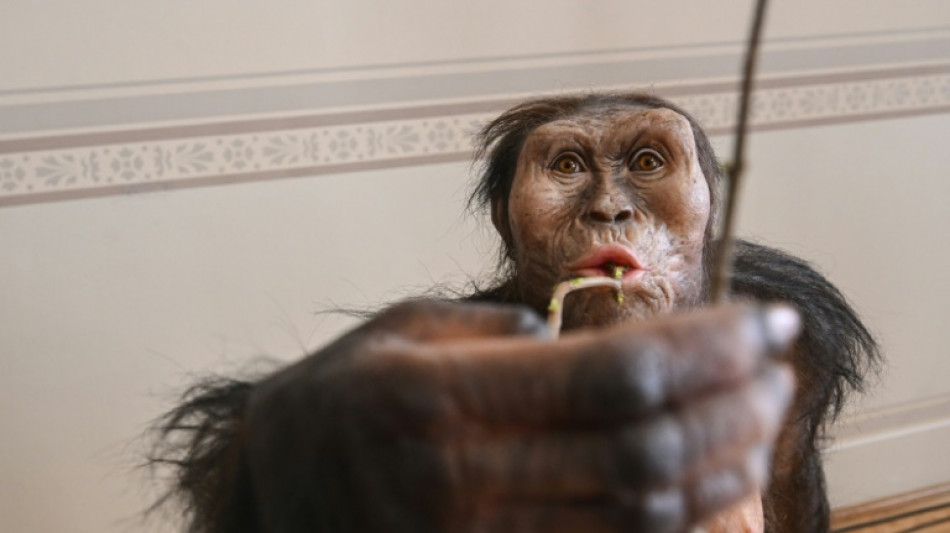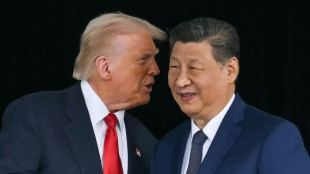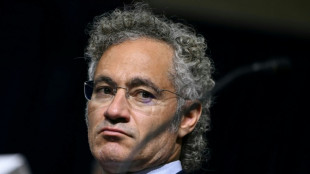
-
 Where things stand on China-US trade after Trump and Xi talk
Where things stand on China-US trade after Trump and Xi talk
-
Sri Lanka targets big fish in anti-corruption push

-
 NY elects leftist mayor on big election night for Democrats
NY elects leftist mayor on big election night for Democrats
-
Injured Jordie Barrett to miss rest of All Blacks tour

-
 Asian markets tumble as tech bubble fears grow
Asian markets tumble as tech bubble fears grow
-
Pay to protect: Brazil pitches new forest fund at COP30

-
 Australia pick 'impressive' Weatherald in first Ashes Test squad
Australia pick 'impressive' Weatherald in first Ashes Test squad
-
Iraq's social media mercenaries dying for Russia

-
 Young leftist Trump foe elected New York mayor
Young leftist Trump foe elected New York mayor
-
Concerns at ILO over expected appointment of close Trump advisor

-
 Venus Williams to return to Auckland Classic at the age of 45
Venus Williams to return to Auckland Classic at the age of 45
-
No deal yet on EU climate targets as COP30 looms

-
 Typhoon death toll climbs to 66 in the Philippines
Typhoon death toll climbs to 66 in the Philippines
-
NATO tests war preparedness on eastern flank facing Russia

-
 Uncapped opener Weatherald in Australia squad for first Ashes Test
Uncapped opener Weatherald in Australia squad for first Ashes Test
-
Liverpool down Real Madrid in Champions League, Bayern edge PSG

-
 Van Dijk tells Liverpool to keep calm and follow Arsenal's lead
Van Dijk tells Liverpool to keep calm and follow Arsenal's lead
-
PSG left to sweat on injuries to Dembele and Hakimi

-
 Reddit, Kick to be included in Australia's social media ban
Reddit, Kick to be included in Australia's social media ban
-
Ex-Zimbabwe cricket captain Williams treated for 'drug addiction'

-
 Padres ace Darvish to miss 2026 MLB season after surgery
Padres ace Darvish to miss 2026 MLB season after surgery
-
Diaz hero and villain as Bayern beat PSG in Champions League showdown

-
 Liverpool master Real Madrid on Alexander-Arnold's return
Liverpool master Real Madrid on Alexander-Arnold's return
-
Van de Ven back in favour as stunning strike fuels Spurs rout

-
 Juve held by Sporting Lisbon in stalling Champions League campaign
Juve held by Sporting Lisbon in stalling Champions League campaign
-
New lawsuit alleges Spotify allows streaming fraud

-
 Stocks mostly drop as tech rally fades
Stocks mostly drop as tech rally fades
-
LIV Golf switching to 72-hole format in 2026: official

-
 'At home' Djokovic makes winning return in Athens
'At home' Djokovic makes winning return in Athens
-
Manchester City have become 'more beatable', says Dortmund's Gross

-
 Merino brace sends Arsenal past Slavia in Champions League
Merino brace sends Arsenal past Slavia in Champions League
-
Djokovic makes winning return in Athens

-
 Napoli and Eintracht Frankfurt in Champions League stalemate
Napoli and Eintracht Frankfurt in Champions League stalemate
-
Arsenal's Dowman becomes youngest-ever Champions League player

-
 Cheney shaped US like no other VP. Until he didn't.
Cheney shaped US like no other VP. Until he didn't.
-
Pakistan edge South Africa in tense ODI finish in Faisalabad

-
 Brazil's Lula urges less talk, more action at COP30 climate meet
Brazil's Lula urges less talk, more action at COP30 climate meet
-
Barca's Lewandowski says his season starting now after injury struggles

-
 Burn urges Newcastle to show their ugly side in Bilbao clash
Burn urges Newcastle to show their ugly side in Bilbao clash
-
French pair released after 3-year Iran jail ordeal

-
 EU scrambles to seal climate targets before COP30
EU scrambles to seal climate targets before COP30
-
Getty Images largely loses lawsuit against UK AI firm

-
 Cement maker Lafarge on trial in France over jihadist funding
Cement maker Lafarge on trial in France over jihadist funding
-
Sculpture of Trump strapped to a cross displayed in Switzerland

-
 Pakistan's Rauf and Indian skipper Yadav punished over Asia Cup behaviour
Pakistan's Rauf and Indian skipper Yadav punished over Asia Cup behaviour
-
Libbok welcomes 'healthy' Springboks fly-half competition

-
 Reeling from earthquakes, Afghans fear coming winter
Reeling from earthquakes, Afghans fear coming winter
-
Ronaldo reveals emotional retirement will come 'soon'

-
 Munich's surfers stunned after famed river wave vanishes
Munich's surfers stunned after famed river wave vanishes
-
Iran commemorates storming of US embassy with missile replicas, fake coffins


Human ancestors making 'bone tech' 1.5 million years ago, say scientists
Our ancestors were making tools out of bones 1.5 million years ago, winding back the clock for this important moment in human evolution by more than a million years, a study said Wednesday.
Ancient humans -- also called hominins -- such as the robust Australopithecus are known to have used fragments of bones to dig up tubers from termite mounds.
Even today our closest living relative, chimpanzees, use sticks in a similar way to dig out termites for a tasty treat.
And more than two million years ago, hominins were using crude stone tools in Tanzania's Olduvai Gorge, one of the world's most important prehistoric sites.
But there were no known examples of anyone systematically making bone tools more than 500,000 years ago -- until now.
At Olduvai, a Spanish-led team of researchers found 27 tools made out of the leg and arm bones of big mammals, mainly elephants and hippos.
The discovery "sheds new light on the almost unknown world of early hominin bone technology," they wrote in a study in the journal Nature.
To the untrained eye, the tools might seem like random bits of bone.
But for the researchers, they are proof of the remarkable cognitive abilities of our distant ancestors, showing they were capable of choosing the appropriate material and fashioning it for their needs.
"There is a clear desire to change the shape of the bone to turn them into very heavy, long tools," Francesco d'Errico, an archaeologist at France's Bordeaux University and study co-author, told AFP.
The unknown hominins used rocks as hammers to shape the bones. The resulting tools ranged from 20 to 40 centimetres (eight to 15 inches) long, some weighing up to a kilo.
"In some cases there are even notches in the middle of the bone, possibly so they could hold it better in their hands," d'Errico said.
The big, pointy tools are thought to have been used to butcher the carcasses of large animals.
- From axes to needles -
At the time, stone tools were being made in a far more rudimentary manner.
Very few large stone tools have been found at Olduvai, d'Errico said, possibly because the quartz available at the site was not well-suited to the difficult job of cutting up big animals.
It was the Acheulean culture, which was emerging in Africa at around the same time, that first cut stones into hand axes, also called bifaces.
This invention represented a major advance, making it possible for ancient humans to properly slice or skin their prey.
"The hypothesis of the study is that the bone-cutting at Olduvai is an original invention, during a moment of transition to bifaces," d'Errico said.
According to this theory, the bone techniques developed at Olduvai disappeared from the planet for a million years.
It would eventually reappear in places such as the area of modern-day Rome, where a lack of good big rocks spurred hominins to carve elephant bones into hand axes.
It is also possible that the techniques continued throughout the years "but these bones have not been properly identified in other archaeological sites," d'Errico said.
As the human line evolved, so did the sophistication of the tools we carved out of bone.
For example, the first needles with eyes were made from bone in China and Siberia, only arriving in Europe around 26,000 years ago, d'Errico said.
But that is another "very long story," he added.
O.Mousa--SF-PST


